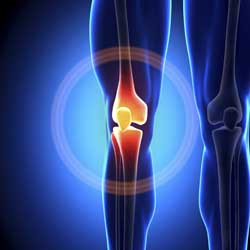Device to detect changes in joint fluid
Some materials are sort of stretchy and stringy due to the presence of long and flexible molecules that resist deformation under an applied longitudinal stress. Melted polymers and melted cheese are such materials. So are important biological materials such as saliva, mucus, and the synovial fluid that lubricates and protects cartilage surfaces in mammalian joints. In arthritis patients, the viscoelasticity of synovial fluid is reduced. A microfluidic platform (a miniature flow channel) developed within the EU-funded project MICRO-BIORHEOLOGY can now characterise synovial fluid undergoing stretching deformations. It could be applied to other fluids as well. Scientists focused on hyaluronic acid, a polysaccharide found in large quantities in synovial fluid. Hyaluronic acid injections are one treatment for osteoarthritis. Improved understanding will lead to both better diagnosis based on fluid samples and better treatments. The microfluidic extensional flow device, termed optimised-shape cross-slot extensional rheometer (OSCER), exploits mutually bisecting channels (cross-slots) in order to stretch microscopic fluid samples. The team first confirmed that it accurately reproduces computational fluid dynamics simulations of the flow of simple fluids like water and 'model' viscoelastic fluids of polymers. Using polarised light microscopy on polymer solutions, scientists showed that changes in the intensity of transmitted light are proportional to fluid stress. This makes these changes useful in measuring resistance to extensional deformation (i.e. the extensional viscosity). Investigators then measured the extensional viscosity of model synovial fluids based on hyaluronic acid solutions. For each fluid tested, the OSCER device measured extensional viscosity up to 50 times higher than the shear viscosity measured by a conventional rheometer. This shows that the synovial fluid 'hardens' in response to strain. In practice, this would mean that it thickens as it is compressed between the joint surfaces, providing shock absorption and preventing damage, particularly from sudden high-load impacts. Further studies demonstrated that refractive index differences can be used to assess hyaluronic acid molecular properties. This supports the possibility of characterising hyaluronic acid in real synovial fluid to evaluate degradation. The methods could provide the basis for a diagnostic toolbox that could also follow the progression of the disease with biopsy-sized samples of synovial fluid.







